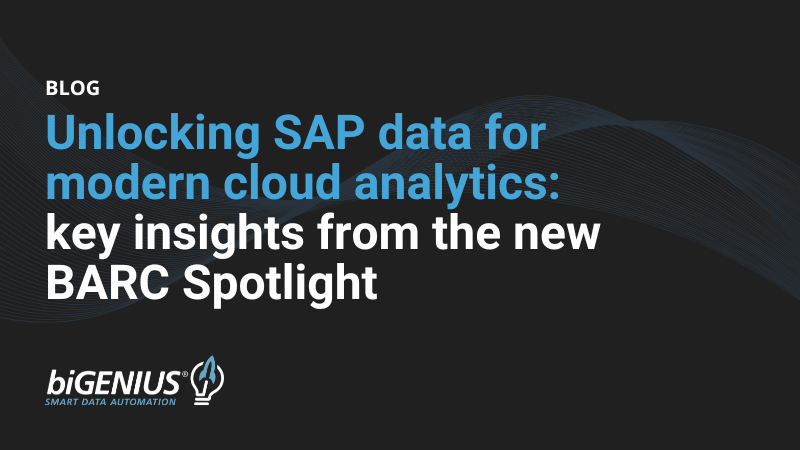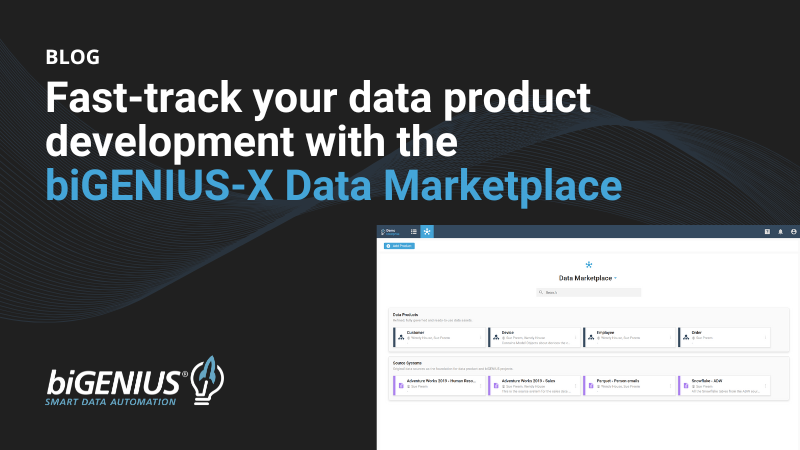What is Data Mesh and why does it matter?
Data Mesh is a decentralized approach to managing data at scale, empowering business domains to own their data. This paradigm overcomes centralized platform limitations, allowing organizations to scale without bottlenecks. While Data Mesh enables faster, more flexible responses to business needs, its implementation comes with challenges. Data automation is crucial in addressing these issues by streamlining data product management and ensuring quality and consistency across domains.
Understanding data as a product
In a Data Mesh, data is treated as a product, with each business domain responsible for providing high-quality, accessible data for others to use. This approach ensures data assets are optimized for various needs, from operations to analysis. Understanding the different types of data products and their roles is crucial for building a functional, scalable Data Mesh:
- Source-aligned data products: These reflect raw data as produced and stored by source systems, such as transactional databases or sensor data. They are semi-structured and provide a direct representation of real-time information.
- Consumer-aligned data products: Tailored to meet specific needs of a particular business use case or consumer, these products combine and transform data from multiple sources, providing a comprehensive view customized for analysis or decision-making.
- Aggregate/derived data products: These combine or summarize data from various source-aligned products, offering insights by processing and aggregating large data volumes. They are often used in advanced analytics or reporting tools.
Navigating data contract evolution
As Data Mesh requires evolving data products while maintaining compatibility, data contracts must adapt to changing business needs. These changes need careful management to avoid breaking existing functionality.
Backward and forward Compatibility
Ensuring that data contracts are compatible across different versions is critical. Techniques like semantic versioning and serialization formats (Avro, Protobuf, JSON) allow smooth transitions, enabling consumers to continue using older versions while upgrading at their own pace.
Formalization of data contracts
Data contracts can be defined using various specification languages to ensure that data products are well-documented, making it easier for teams to integrate and consume data from other domains.
Breaking down data: decomposing and refactoring
As data platforms grow, large data products can become too complex and difficult to manage. Decomposing or refactoring these into smaller, more focused data products can improve scalability and flexibility.
Granularity and refactoring
Large, coarse-grained data products might try to serve too many purposes. By refactoring these into smaller, fine-grained products, businesses can better target specific user needs, leading to easier management, faster innovation, and more efficient updates.
Versioning and migration
When refactoring, it's essential to maintain support for older versions while migrating consumers to the new structure. This approach ensures a smooth transition and avoids disrupting ongoing business processes.
Deprecation strategy
Clearly communicating timelines for phasing out old versions helps teams plan their migration effectively and sets clear deadlines for when old data products will be sunset.
Domain refactoring for better efficiency
Similar to data products, domains can become too large and cumbersome over time. Domain refactoring helps break down large domains into smaller, more manageable units, each responsible for its data products.
Streamlining domains
Domain refactoring improves efficiency by allowing smaller, well-defined domains to respond more quickly to changes in business needs or technology. This approach enables organizations to innovate faster and allocate resources more effectively.
Domain ownership
By separating concerns, businesses can align with the core principles of Data Mesh, where data ownership is decentralized, and domains operate independently. Each domain owns its data, is responsible for data quality and accessibility, and can respond more quickly to changes.
Overcoming Data Mesh challenges with biGENIUS-X
biGENIUS-X is designed to simplify many of the challenges organizations face when implementing Data Mesh. It offers a cloud-based, vendor-agnostic solution for designing, building, and maintaining data platforms, enabling businesses to manage their data products efficiently without being locked into a single technology.
Manage data contracts with Linked Projects
With Linked Projects, biGENIUS-X allows you to export and import settings from one project to another, so that these projects are structured according to the same schema.
Low-code capabilities
biGENIUS-X's low-code functionalities allow users to design and model data products without needing in-depth technical knowledge, making data platform development accessible to more people within the organization.
Support for multiple technologies
With biGENIUS-X, you can reuse your metadata for other biGENIUS-X generators, facilitating easier changes to the underlying technology of your analytical data solution.
Automation
biGENIUS-X automatically generates scripts and artifacts needed to create data platforms with minimal manual intervention, reducing complexity and helping organizations scale their data products quickly and efficiently.
Future-proof your data strategy
The true value of Data Mesh, enhanced by automation solutions such as biGENIUS-X, lies in strategic implementation. Organizations should understand that adopting these approaches requires more than technological change—it demands a cultural shift toward data literacy and ownership across departments.
The success of a Data Mesh strategy depends on balancing decentralized domain-driven data ownership with centralized governance. This delicate balance allows for agility without sacrificing data quality or security. Automation should be viewed not just as an efficiency tool, but as a catalyst for innovation, freeing data teams to focus on higher-value activities such as advanced analytics and AI initiatives.






